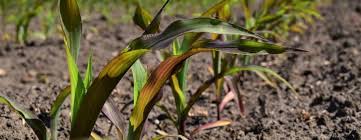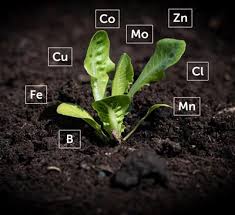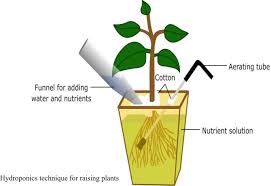Mineral nutrients are essential elements primarily acquired as inorganic ions from the soil. Plants, often referred to as the “miners” of Earth’s crust, play a critical role in bringing these nutrients into the biosphere.
The vast surface area of plant roots, combined with their ability to absorb low concentrations of ions, makes mineral absorption highly efficient. Once absorbed, these nutrients are translocated throughout the plant for various biological functions.
Mycorrhizal fungi and nitrogen-fixing bacteria also assist plants in nutrient acquisition. The study of how plants obtain and utilize mineral nutrients is known as mineral nutrition.
Definition of Mineral Nutrition in Plants
Nutrients refer to chemical compounds needed by organisms, while nutrition involves the supply and absorption of these compounds essential for plant growth and metabolism.
For optimal plant health, 17 essential elements are required: C, H, O, N, P, K, Ca, S, Mg, Fe, Mn, Zn, B, Cu, Mo, Cl, and Ni. These elements are classified into two main groups:
1. Major elements (Macronutrients): Required in large amounts. Minerals found in concentrations greater than 1000 ppm fall into this category, including C, H, O, N, P, K, Ca, S, and Mg.
2. Minor elements (Micronutrients): Needed in trace amounts. Minerals with concentrations below 100 ppm include Fe, Zn, Mn, B, Cu, and Mo.
Read Also: All You Need To Know About Small White Flowers
Beneficial Elements in Agriculture

Certain elements, though not essential for all plants, provide significant benefits to specific crops. These include sodium (Na), silicon (Si), and cobalt (Co).
Na is particularly beneficial to crops like turnips, sugar beets, and celery. Si is essential for rice, while Co is crucial for blue-green algae and certain legumes involved in nitrogen fixation.
Criteria for Essentiality of Mineral Elements in Plant Growth
Arnon and Stout (1939) proposed three criteria to define an essential mineral element:
- Plants cannot complete their life cycle without the element.
- The element’s function cannot be replaced by another.
- The element must be directly involved in plant metabolism.
Based on mobility, mineral elements are further classified as:
i. Mobile elements: N, P, K, S, and Mg.
ii. Immobile elements: Ca, Fe, and B.
iii. Intermediate in mobility: Zn, Mn, Cu, and Mo.
Classification of Plant Nutrients by Biochemical Role and Function
Nutrient elements can also be classified according to their biochemical and physiological functions:
1. 1st Group (C, H, O, N, S): These elements are involved in the formation of essential organic compounds and enzymatic processes.
2. 2nd Group (P, B, Si): Crucial for energy storage and maintaining structural integrity.
3. 3rd Group (K, Na, Mg, Ca, Mn, Cl): Important for enzyme activity, osmotic regulation, and other cellular processes.
4. 4th Group (Fe, Cu, Zn, Mo): Predominantly function in electron transport and enzymatic reactions.
Visible Symptoms of Mineral Deficiencies in Agriculture

Deficient mineral levels in plants often lead to visible symptoms, affecting growth and physiological processes:
1. Stunted growth: Common in nitrogen and phosphorus deficiencies, stunting stems or roots.
2. Chlorosis: Yellowing of leaves due to magnesium, nitrogen, or iron deficiencies.
3. Necrosis: Dead spots or zones caused by deficiencies in magnesium, potassium, or manganese.
4. Color changes: Phosphorus deficiency may cause purple coloration in stems and leaves.
The Dose-Effect of Mineral Availability
The relationship between mineral availability and plant growth follows a dose-effect curve. Initially, as minerals increase, growth improves.
At a certain point, growth levels off (the luxury zone), and further increases can lead to toxicity, diminishing growth. Farmers aim to maintain nutrient levels within the sufficient-to-luxury zone, avoiding deficiency or toxicity.
Specific Roles of Essential Macronutrients in Agriculture
1. Nitrogen (N): Key for proteins, nucleic acids, and chlorophylls. Deficiency causes stunted growth and chlorosis, particularly in older leaves.
2. Phosphorus (P): Integral to nucleic acids and energy transfer processes. Deficiency leads to premature leaf fall, necrotic areas, and purpling of leaves.
3. Potassium (K): Activates enzymes and regulates water balance. Deficiency causes chlorosis, necrotic spots, and stunted growth.
4. Calcium (Ca): Vital for cell walls and membranes. Deficiency results in disintegration of meristematic regions and malformation of young leaves.
5. Magnesium (Mg): Central to chlorophyll and protein synthesis. Deficiency causes mottled chlorosis and dead patches on leaves.
6. Sulphur (S): Important for amino acids and enzyme function. Deficiency causes chlorosis and hardening of stems.
Understanding these specific roles and symptoms allows for more targeted agricultural practices, ensuring healthy and productive crops.
Read Also: Recommended Volume of Water for Fish Farming on a Concrete Pond
Micronutrients in Plants: Role and Deficiency Symptoms

Micronutrients play critical roles in plant metabolism, even though they are required in small amounts. Below is a summary of the specific functions and deficiency symptoms of key micronutrients:
1. Iron (Fe):
i. Role: Iron is a crucial component of iron porphyrin proteins such as cytochromes, peroxidases, and catalases. It is essential for chlorophyll synthesis and is a key element in the ferredoxin protein, which is involved in photosynthesis and nitrogen fixation.
ii. Deficiency Symptoms: Iron deficiency leads to interveinal chlorosis, primarily affecting young leaves, resulting in yellowing between the veins.
2. Zinc (Zn):
i. Role: Zinc is involved in the biosynthesis of the growth hormone auxin (indole-3-acetic acid). It also activates several enzymes, such as carbonic anhydrase and alcohol dehydrogenase.
ii. Deficiency Symptoms: Zinc deficiency causes chlorosis of young leaves, starting from the tips and margins, and results in reduced leaf size, known as ‘little leaf disease.’ Additionally, affected plants have short stalks.
3. Manganese (Mn):
i. Role: Manganese acts as an activator for many respiratory enzymes and nitrite reductase. It is also required for the evolution of oxygen (photolysis) during photosynthesis.
ii. Deficiency Symptoms: Manganese deficiency results in mottled chlorosis, where the young leaves develop green veins and small necrotic spots along with yellow stripes.
4. Copper (Cu):
i. Role: Copper is a key constituent of plastocyanin and several oxidizing enzymes.
ii. Deficiency Symptoms: Copper deficiency causes necrosis at the tips of young leaves, die-back in citrus and fruit trees, and diseases such as white tip disease in cereals and legumes.
5. Boron (B):
i. Role: Boron helps in the translocation of sugars by forming a sugar-borate complex and is involved in cell differentiation, development, fertilization, and hormone metabolism.
Deficiency Symptoms: Boron deficiency results in the death of shoot tips, stunted root growth, and suppressed flower formation. It also leads to disorders like heart rot in beet, stem crack in celery, and internal cork formation in apples.
6. Molybdenum (Mo):
i. Role: Molybdenum is a component of the enzyme nitrate reductase, playing an essential role in nitrogen metabolism and assisting in flower formation and fruit setting.
ii. Deficiency Symptoms: Molybdenum deficiency causes interveinal chlorosis of older leaves and inhibits flower formation, leading to whiptail disease in cauliflower plants.
7. Chlorine (Cl):
i. Role: Chlorine is involved in oxygen evolution in photosystem II during photosynthesis. It also raises cell osmotic pressure and accelerates amylase activation, which converts starch into soluble sugars.
ii. Deficiency Symptoms: Chlorine deficiency causes overall plant wilting and chlorosis of young leaves. In some plants, such as tomatoes, it leads to chlorotic mottling, bronzing, and tissue necrosis.
Nutrient Uptake in Plants: Mechanisms
Nutrient uptake occurs through both passive and active mechanisms. Plants absorb nutrients in the form of ions dissolved in soil solutions, and the process involves different types of transport based on energy requirement and concentration gradients.
1. Passive Absorption: This type of absorption occurs when ions or molecules move from areas of higher concentration to lower concentration without requiring energy. Examples include:
i. Simple Diffusion: Movement of small, non-polar molecules like oxygen and carbon dioxide across membranes.
ii. Facilitated Diffusion: Specific proteins in the membrane help polar molecules, such as water and ions, diffuse down their electrochemical gradient.
iii. Channel Proteins: These proteins form channels that allow ions like K+ and NH4+ to pass rapidly.
iv. Transporters or Co-transporters: These proteins bind specific ions or molecules, undergo a structural change, and transport them across the membrane.
2. Active Absorption:
Active transport requires energy from ATP to move ions against their concentration gradient. This process involves ATP-powered pumps, such as:
i. Na+-K+ Pump: Transports K+ into the cell and Na+ out of the cell.
ii. Ca2+-ATP Pump: Regulates calcium ion concentration within the cell.
Do you have any questions, suggestions, or contributions? If so, please feel free to use the comment box below to share your thoughts. We also encourage you to kindly share this information with others who might benefit from it. Since we can’t reach everyone at once, we truly appreciate your help in spreading the word. Thank you so much for your support and for sharing!

